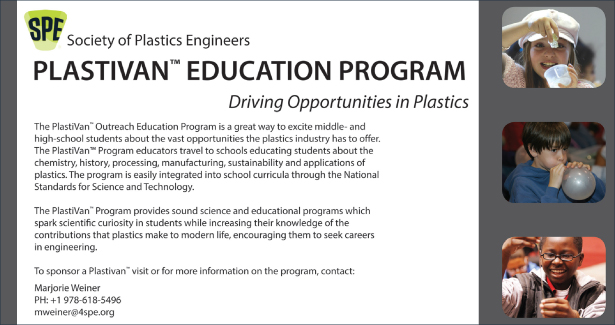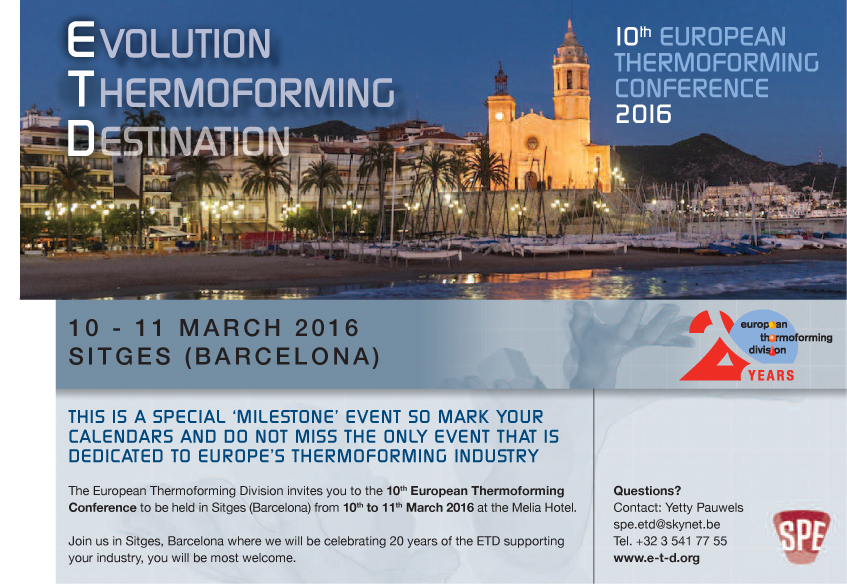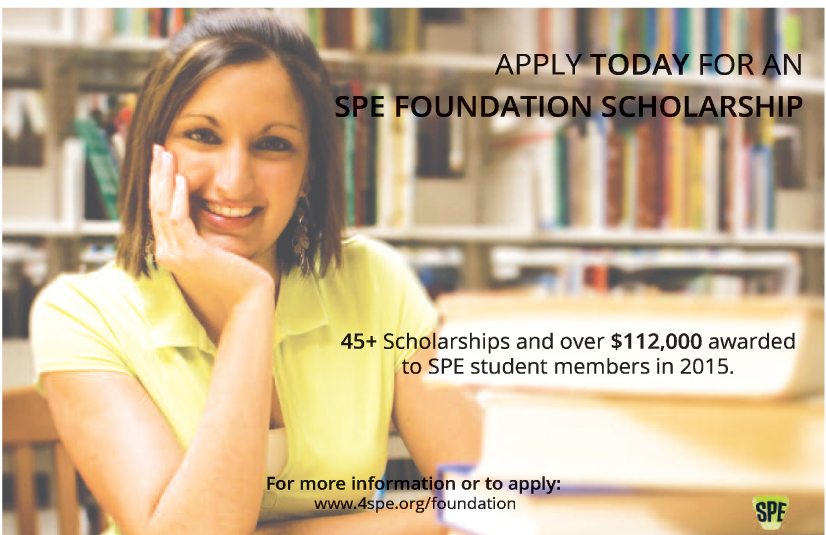By Roger Corneliussen
By Roger Corneliussen
By Roger Corneliussen


Electroactive Polymers
U.S. Patent 9,074,053 (July 7, 2015), “Polymeric Composition with Electroactive Characteristics,” Ralph Locke, Michael Kerman, Melissa Arredondo, and William Cowell (Mackinac Polymers, LLC, Fort Myers, Florida, USA).
Fillers have been used to provide or enhance conductive properties of polymeric materials. However, the ability to provide these materials with ferroelectric properties is limited.
Locke et al. developed electroactive materials based on polymeric nanocomposites. Their materials are based on 100-nm or smaller inorganic and graphene nanoparticles attached to the polymer. These polymers include polyester polyols, copolyesters, polyacrylates, polysulfides, polyolefins, polyamines, and polyurethanes. The nanoparticles are ferromagnetic, ferrimagnetic, antiferrimagnetic, and/or graphene functionalized with hydroxyl, amine, carboxylic acid, mercapto, isocyanate, and acrylate groups.
Strong Breathable Sheets
U.S. Patent 9,138,690 (September 22, 2015), “Method for Producing Air-Permeable Composite Sheet,” Hiroshi Manabe (W. L. Gore & Associates, Co., Ltd., Tokyo, Japan).
A porous PTFE sheet can be breathable, allowing the transport of water vapor and other gases but not liquid water. However, porous PTFE sheet is not sufficient in compressive resistance, mechanical strength, and abrasion resistance for many applications.
Manabe developed an air-permeable composite with excellent mechanical strength and compression resistance as well as air-permeability, water repellency, heat resistance, and chemical resistance. Pores of a PTFE sheet are filled with a hardenable material, and then the hardened sheet is expanded. A porous PTFE sheet with a porosity of 30 to 70% is filled with silicon alkoxide by vacuum impregnation, cured by a sol-gel reaction, and expanded two to ten times. The permeable composite sheet has two times or more strength, compared to the original porous PTFE sheet.
Transparent Containers with Handles
U.S. Patent 9,132,582 (September 15, 2015), “Apparatus and Method for Manufacturing Transparent Synthetic Resin Vessel with Integrated Handle,” Sung Kyu Park (Gyeonsangnam-do, South Korea).
Handles for molded plastic bottles are usually attached to the neck after the bottle blowing process. But the attachment method can be costly.
Park manufactured a transparent polyethylene terephthalate (PET) bottle with an integrated handle. The blow mold includes an upper vertical moveable mold with a core, a fixing ribbed plate, and a vertical moving rotating plate. With this complex mold, a transparent handle is injection molded on one side of a preform and attached to the bottle during bottle formation. This coordinated, integrated molding process enhances bearing power, solidity, and durability of the transparent PET bottles, with improved handling and use.
Anti-ballistic Armor
U.S. Patent 9,127,915 (September 8, 2015), “Self-Healing Composites,” Fu-Jya Daniel Tsai and John Bicknell Luscombe, III (Novana, Inc., Alpharetta, Georgia, USA).
The primary function of anti-ballistic armor is to stop projectile penetration and quickly diffuse the impact energy. These anti-ballistic materials are primarily made from steel, high-strength woven fibers, and ceramics. However, current anti-ballistic materials are expensive and heavy.
Tsai and Luscombe, III developed lightweight self-healing composites with microstructures that dampen ballistic energy and then return to their original state. These microstructures consist of semi-crystalline thermoplastics attached to nanoparticle nucleating agents. This structure converts high frequency and high amplitude shock waves into heat and restores its original microstructure through reversible compression and decompression cycles.
The microstructure consists of soft regions of entangled chains and hard regions of lamellae or spherulites anchored to nanoparticle nucleating agents. The soft regions trap the incoming energy shock wave, while the hard regions provide the anchor sites to allow the entangled chains to remain in place during ballistic impact. These anti-ballistic composites do not degrade under repeated fire. An effective material consists of high-density polyethylene with 8 to 60 wt% of up to 200-nm metal oxide nanoparticles.
Recyclable Thermoplastic Elastomers
U.S. Patent 9,127,152 (September 8, 2015), “Dynamically Crosslinked Thermoplastic Material Process,” John C. Chen (Nike, Inc., Beaverton, Oregon, USA).
Articles formed from cured elastomers may have excellent physical properties, such as stability, durability, flexibility, elasticity, and resilience, but crosslinked rubbers and other thermoset materials cannot be easily recycled. Scrap thermoset materials generated during production that cannot be recycled increase manufacturing costs as well as add to landfill burden.
Chen developed a method for making a thermoplastic material by extruding a thermoplastic with unsaturated elastomers and two different free-radical initiators through two different zones. The first zone partially crosslinks the elastomers at the lower temperature. Fresh thermoplastics are added, and the molten mixture passes through a second zone at a higher crosslinking temperature.
The result is a thermoplastic with dispersed domains of cured elastomers which can then be molded into products. After use, these materials can be re-extruded with additional resin and additives to form second-generation products with reasonable properties.
Ultrasound Crosslinking
U.S. Patent 9,127,134 (September 8, 2015), “Method for Curing Resin with Ultrasound,” Norman R. Byrd, Masood A. Zaidi, and John A. Petty (The Boeing Company, Chicago, Illinois, USA).
Composite materials are often formed by mixing a polymer with a catalyst, adding reinforcement to the substrate, molding, and curing. Most commonly, heat is used to cure resins. New, more efficient methods are needed for high-performance composites.
Byrd, Zaidi, and Petty developed a method for curing a resin by immersing the uncrosslinked molded structure in a gaseous coupling fluid and applying ultrasonic energy to the coupling fluid. Cavitation of ultrasonically formed bubbles results in localized temperatures as high as 5000°C and pressures as high as 1000 atmospheres in less than one microsecond. Thus, the cavitation of a fluid due to exposure to ultrasound results in a tremendous concentration of localized energy in an otherwise relatively cold fluid, which leads to extremely efficient curing.
Toughened PS Foams
U.S. Patent 9,127,135 (September 8, 2015), “Expanded Composite Polystyrene-Based Resin Particles and Expanded Molded Article Thereof,” Yasutaka Tsutsui and Shingo Terasaki (Sekisui Plastics Company, Ltd., Osaka, Japan).
Expanded polystyrene (PS) molded articles are popular packaging and thermal insulating materials. However, the material’s impact resistance and resilience are insufficient for other uses.
Tsutsui and Terasaki developed toughened expanded PS-based resin particles by adding dispersed fine particles of polyacrylic acid alkyl ester-based resins. These particles have aspects ratios of 20 to 50, oriented along the cell membrane surface direction. The resin contains 5 to 100 parts of particles by weight per 100 parts of PS resin.
Note: The above patents were selected from 100 to 400 plastics-related patents found each week by reviewing 3,000 to 7,000 U.S. patents published each Tuesday. A complete list of plastics-related patents is listed by week and topic at www.plasticspatents.com. Readers are invited to visit this site to see the latest patents, without charge.


